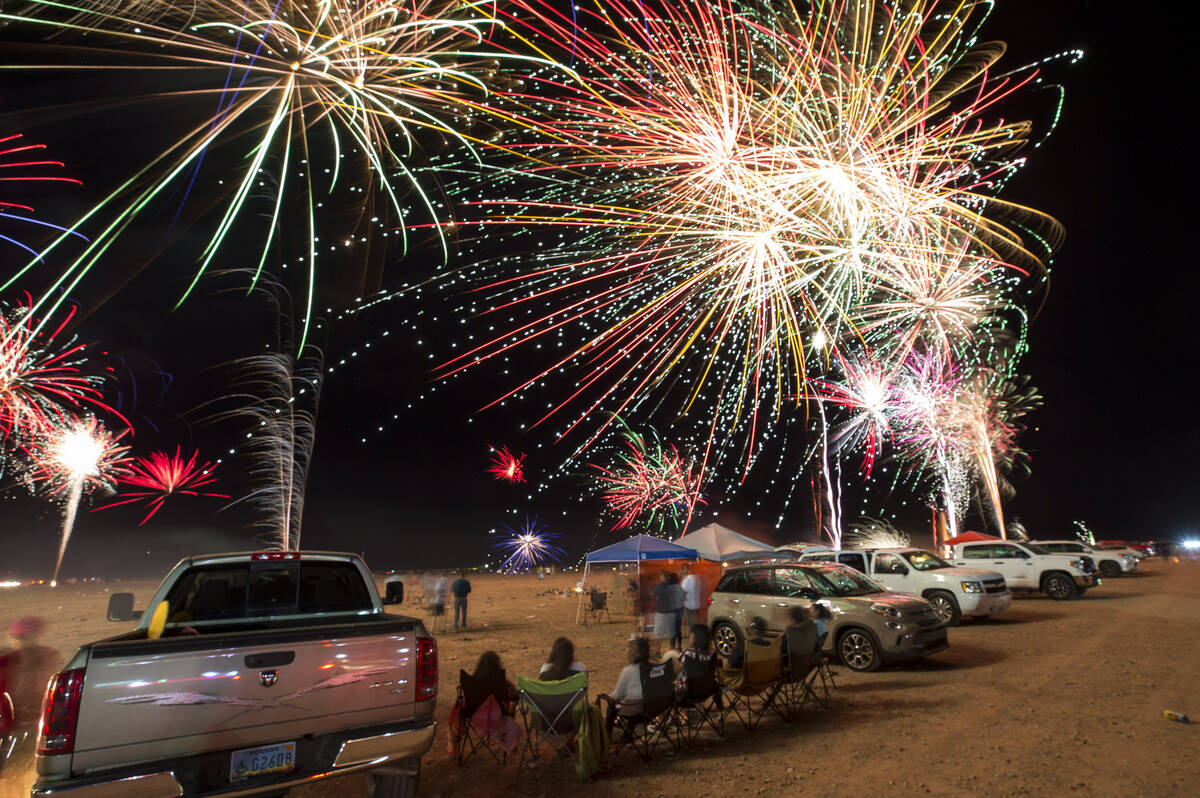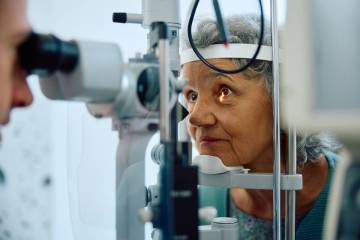‘Our least favorite day of the year’: Las Vegas eye doctors promote firework safety on July 4th
Colorful fireworks light up the Las Vegas sky every Fourth of July. Along with the city’s many professional shows, plenty of households buy their own fireworks to celebrate American independence.
Fireworks go on sale June 28, with only those labeled “safe and sane” allowed from June 28 through July 4.
The holiday is less exciting for eye doctors. Some of their busiest shifts happen late on that night, when people come into hospitals suffering from firework-related injuries.
“It’s such a common thing, where there’s this spike in eye-related trauma,” said Peter DeBry, an ophthalmologist in Henderson. Ophthalmologists are physicians specializing in eye care.
Impacts and burns
When dealing with fireworks, DeBry said there are two main ways people get hurt: impacts and burns.
Impacts happen when firework parts hit the eye, typically causing blunt wounds that bleed. Burns also happen if fragments are still hot, although DeBry said humans blink fast enough that the actual eye usually escapes harm.
“These fireworks have phosphorus, and that’s what gives you your bright, flashy colors,” he added. “But obviously, if you get that on your skin or obviously on your eyelid or eyelashes or even your eyeball, then that’s very high heat for very short periods of time.”
One of DeBry’s most notable experiences treating a Nevada burn victim happened after a patient thought a “roman candle” firework had failed to light.
“They run over and like kind of pick it up and look in it like, ‘Is this working; what happened?’ And that’s when that flame finally catches and then shot one of those burning balls right at their eye,” DeBry said. “That person basically lost their vision from that severe injury.”
Immediate blindness is the worst-case scenario for most eye injuries. In tamer cases, cataracts form a few days after the accident, requiring surgical removal. Patients also can develop glaucoma, an incurable condition causing gradual vision loss.
DeBry noted that even with all the eye injuries, Las Vegas hospitals aren’t significantly busier on the Fourth of July as the city has “a very active nightlife” year-round.
‘I call them missiles’
Ketan Patel is director of emergency medicine at University Medical Center. He said there’s no huge spike in overall emergency room activity, but he noted the season has plenty of firework-related injuries.
“I call them ‘missiles,’ because that’s technically what a firework is.” Patel said. “These high velocity injuries that occur, they usually cluster around July Fourth time.”
Firework incidents are hardly exclusive to Las Vegas. The American Academy of Ophthalmology has an entire page on firework eye safety, which DeBry said is because of all the injuries that occur on July 4 nationwide.
The page discourages people without professional training from using fireworks altogether, even in states where they’re legal.
The academy also singles out “sparklers.” These are hand-held fireworks often used by children, despite the fact they can burn at temperatures greater than 2,000 degrees Fahrenheit.
‘Our least favorite day of the year’
“People think sparklers are a benign form of fireworks, but even those can be dangerous, especially to children,” said Leslie Kanda, an ophthalmologist in Phoenix.
For many ophthalmologists like herself, she said, July Fourth is “our least favorite day of the year” because of the spike in eye injuries.
All three doctors said the best way to prevent firework-related injuries is to leave launching to the professionals. However, if people decide to use fireworks anyway, they should wear eye protection.
“These glasses are like six dollars at Home Depot,” DeBry said. “They’re a good polycarbonate plastic.”
If someone still gets injured, whether from their own firework or another’s, Kanda said the person shouldn’t try to treat the eye and instead protect it.
“We don’t really recommend that people try to rub their eye or irrigate it with anything,” Kanda explained. “We just say, ‘Cover it with something firm and then go to the emergency room.’ Sometimes you can use something as simple as the bottom of a cup that’s cut out.”
Contact Finnegan Belleau at fbelleau@reviewjournal.com.




















